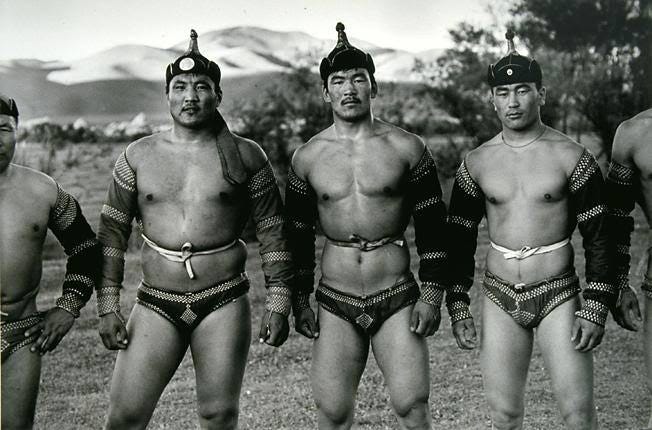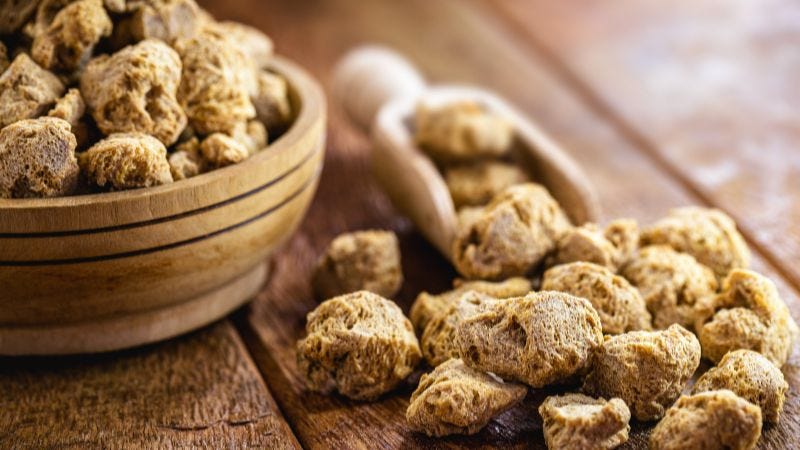Golden Era Motivation 3
Yet more tips and tricks from the greats of bodybuilding
Back in 2021, I wrote a series of email blasts for a friend of mine who had started a fitness company. The emails were called “Golden Era Motivation,” and they were basically intended to provide some… well, motivation using stories, examples and wisdom from the Golden Era of bodybuilding. I wrote ten in all. I thought it would be a good to get these up here lest they disappear forever. I’ve also had a lot of requests for more classic bodybuilding content.
Here’s a triple dose of wisdom: two pieces on the benefits of animal-based wholefood diets and a piece about why Vince Gironda’s life shows a change of heart can be a good thing.
Red Meat, Milk and Eggs
This week we ran an article about a fascinating study from 2017 on the relationship between different kinds of diet and stature in men.
The results of the study, which considered the diets of 107 different countries in Europe, the Middle East, North Africa, Asia and Oceania, shouldn’t surprise you, I hope: men in countries with diets that predominantly draw their protein from animal sources (called milk-based diets in the study), have greater average statures than men from countries with diets that are mainly based on wheat or rice. In fact, rice-based diets, which generally are to be found in tropical Asia, produce the shortest men in the world.
The study found a clear correlation between the amount of protein consumed and height – the more men eat, the taller they are – but it was also clear that protein quality matters too. Some forms of protein are more complete than others – contain more of the full spectrum of amino acids – and amongst the most complete – you guessed it! – are red meat, milk and eggs, with eggs being the most complete of all.
Why does this matter, and what does it have to do with the Golden Era of bodybuilding?
Well, first of all, it’s always nice to find powerful scientific confirmation of the things you take for granted, isn’t it? These are the foods that people seeking to be powerful have tended to choose to eat for a long time, even since before the advent of modern bodybuilding. In fact, a long time since before the advent of modern bodybuilding.
In pre-history, groups of pastoralists – semi-nomadic, animal-herders – had distinct advantages over their settled (ie. grain-cultivating) neighbours in warfare, because of the difference in their diets. Archaeological evidence suggests that the groups who spread the Indo-European languages into Europe owed much of their success to their size and good health, which they developed as a result of – you guessed it! – eating lots of red meat and milk.
There’s a reason why the elites of grain societies still got to eat lots of meat, while their peasant subjects had to make do with bread and vegetables. A warrior nobility, the elite shock troops of an ancient or medieval society, could hardly live by bread alone.
But back to the Golden Era. Red meat, milk and eggs were the cornerstores of more or less every Golden Era diet. Take this description of the diet of Chet Yorton, for instance, the man who famously beat Arnold in the 1966 Mr Universe.
He usually eats six to eight eggs for breakfast and two glasses of raw milk, plus soybean powder with brewer’s yeast. For luncheon he has a light snack of one pound of rare ground beef, some vegetables and a gelatin salad plus his usual two glasses of raw milk, soybean powder and yeast. And for dinner he devours one pound of liver, chicken or steak, or sometimes fish, together with lots of vegetables and a salad, and as usual soybean powder, brewers yeast and two glasses of raw milk.
Eggs, raw milk, red meat – including organ meat. This could easily be a description of the diet of Tom Platz or any other bodybuilder from that period you could care to name.
So if it ain’t broke, why fix it?
The problem is, of course, that there are many who would now do away with animal-based diets altogether. And their movement is quickly gaining ground. Barely a day passes without some new meat- or milk-replacement product entering the market, or without some new study or pronouncement about the environmental and the health costs of animal-based diets. Abandoning meat-based diets is now apparently essential to the future survival of the earth.
Advocates know that social pressure is an essential part of this process, far more so than convincing people to eat plant-based products on the basis of their taste or purported health benefits.
Check out this video from Oatly, a manufacturer of oat ‘milk’, if you haven’t seen it already.
As I type, protestors in England are blockading McDonald’s depots in an attempt to force them to commit to replacing all their meat products with plant-based alternatives by 2025. That’s less than four years away. It would be hard not to consider the case a bellwether: if McDonald’s chooses to cave to such demands, others will no doubt follow – and that’s precisely why the chain was picked by the protestors.
Studies like the 2017 height study are devastating evidence against the claims of advocates of plant-based diets. There can be no doubt that if they were to have their way, human health and well-being would suffer. Plants, as the study’s authors write:
are not able to provide the optimal stimuli for physical growth, even if the intake of total protein and total energy poses no problem. In fact, we observed a difference of 10 cm (174 cm vs. 184 cm) between nations relying on the surplus of plant and animal proteins, respectively.
Why?
Besides low protein quality, a frequently forgotten limiting factor of plant-based diets is their low nutritional density, with a disproportionate load of “empty calories” from starch and oils that must be consumed per unit of a key nutrient.
Of course, I would be the first to advocate for a kinder form of agriculture, one which pays closer attention to the dignity and well-being of the animals in its care, as well as ensuring sustainability in the long term. But humans are part of that equation too, and our dignity and well-being are far better served by high-quality animal products than by frankenfoods grown in a lab.
The fight has only just begun.
Soy Protein
This week we went viral with an article reporting on a study showing that long-term soy consumption makes monkeys into aggressive loners. Even Joe Rogan picked up on the article, posting it to Instagram with the caption ‘This explains Twitter’.
Interestingly enough, soy protein powder was among the most popular early protein powders, not that there was anywhere near as great a selection as you’d find today.






